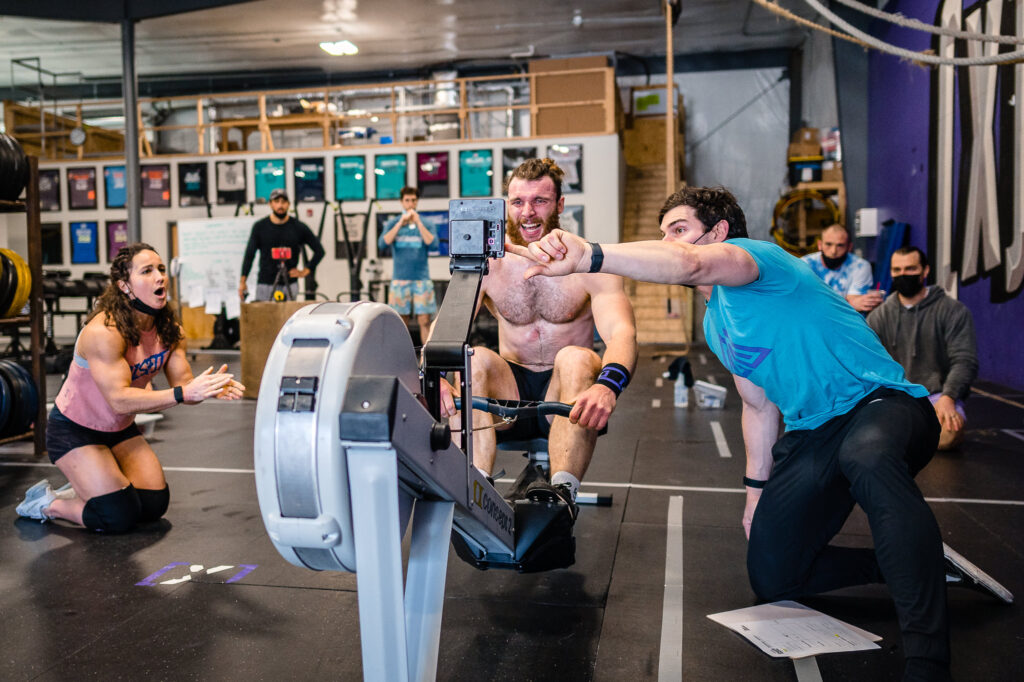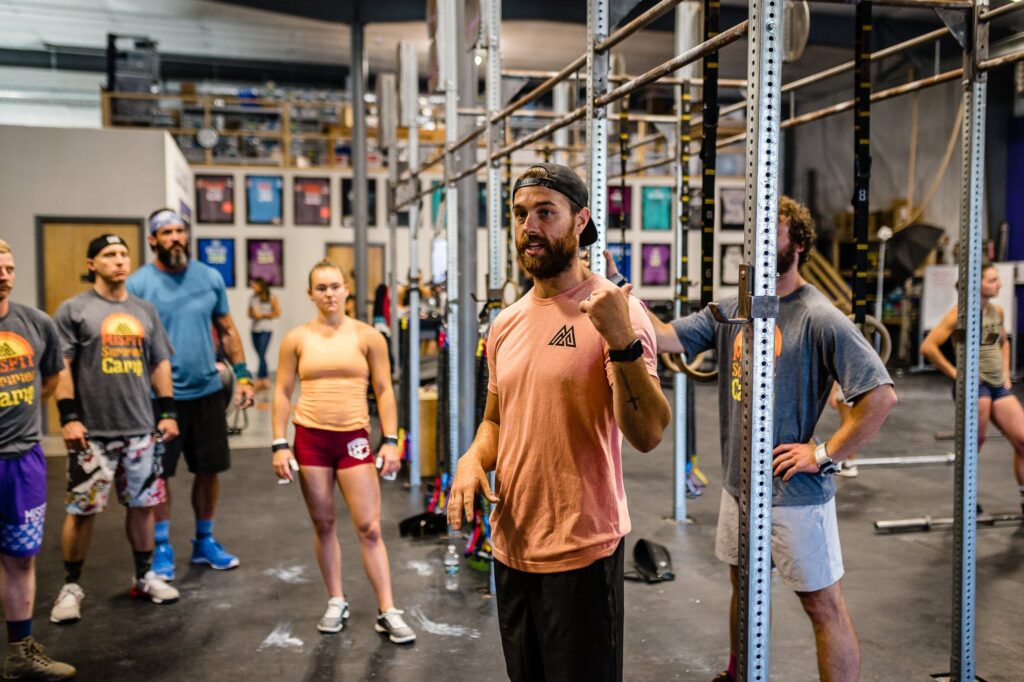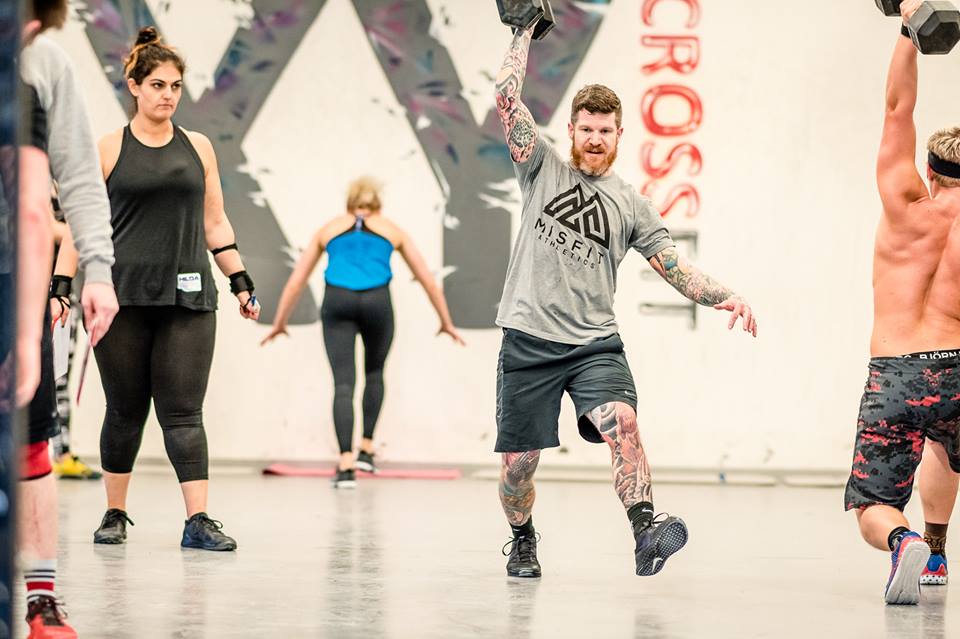Go Slower, Be Faster

At Misfit Athletics, we value experience as the principal driver of growth and success. When we see an opportunity to help Misfits accelerate their growth and subsequently their success, we jump at the chance. If you’re a fan of our Misfit Musings, Coach Drew recently stated that finding a weakness is a gift for an athlete. When you find a weakness, you should be excited by the opportunity to grow and get better. One significant area of weakness we see within the CrossFit community, including us Misfits, is an underdeveloped aerobic engine. The reason for this gap in your fitness has almost zero to do with the willingness to work hard. We know you Misfits love your Bitchwork. Your aerobic fitness not being where it should be, is primarily due to a lack of knowledge and focus on pacing. Intuitively, it sounds wrong that to be faster, you need to practice going slower, often. However, learning to go slow for extended periods is how you develop a more robust engine.
The Problem
Let’s say for a minute that instead of working on your aerobic engine, you were trying to back squat 400lbs for the first time. Each time you went to the gym, you warmed up, hit your activation drills, and then built to a 1RM back squat. How effective/efficiently do you think that program would be at improving your 1RM? The answer? Not very. Squat cycles exist because they work. These programs allow athletes to increase their 1RMs because they will enable the athlete to refine their ability to squat through progressive, submaximal loads performed at a volume that creates the necessary adaptations to squat heavier. The same applies to your aerobic work. If your strategy is “go as hard as you can” regardless of the distance, duration, or pacing instructions, you might be working hard, but you surely aren’t working smart. Like the way you work at lower percentages at higher volumes to increase your 1RM when it comes to improving your aerobic capacity, you need to spend a significant amount of your training time performing submaximal (paced) efforts at higher volumes. Creating the adaptation you’re looking for in your aerobic engine is no different than adding one extra muscle up to your max set or 5lbs to your back squat. It takes practice.
Why Go Long?
If you’re anything like us, you’re going to want to know why before we provide you with easy-to-follow action steps*.* Why does going slow improve your ability to go fast? The answer is what, as in what happens when we train this way. There is a symbiosis between the mental and physiological adaptation this style of exercise provides. The compounding effect of these adaptations is what allows us to go slower to be faster.
While some physiological adaptations take a few weeks to a few months to develop, the mental adaptations come significantly faster for most athletes. The first major mental adaptation we see is the desensitization to the task. One major hurdle that you overcome when performing aerobic exercise is learning to defeat the mental discomfort. The more frequently and consistently you train this duration, the faster you realize your mental distress is self-created, which means you have the power to dictate how you respond.
With only a handful of training sessions, you can build the mental resilience you need to set aside your biases and focus on what you’re there to do, which is to learn about yourself. Each aerobic session you perform begins to create and curate a mental archive of information. Each is an opportunity to learn about how various stimuli affect your body. As you curate these experiences, you should take notes on how varying distances, durations, and paces affect your breathing, heart rate, body (muscles), recovery, and headspace. Armed with this information, you are ready to execute when tested. The best in our sport know precisely what their paces should be irrespective of modality, duration, or distance. They know precisely how they’ll feel and how their body will perform when tested. This information gives them a distinct advantage over their competitors, who are either less experienced or oblivious to this information.
The two driving physiological factors in your ability to go faster by going slower when performing aerobic exercise are developing the cardiovascular system and aerobic musculature. The cardiovascular adaptations that we will discuss next are not in chronological order, nor do they occur separately. Instead, they are interconnected and work in harmony to improve your aerobic fitness. The first significant change that happens is the improvement in the strength and endurance of the cardiac musculature. As you train aerobically, your heart develops the ability to pump a higher volume of blood per heartbeat. This improvement means a higher volume of oxygenated blood can circulate within your body when exercising. From a performance perspective, this means as an athlete works at higher and higher intensities, their heart rate will increase, but not at the same magnitude as someone who is less aerobically fit. A lower heart rate allows an athlete to feel more composed and “in control” of their body, giving them a distinct advantage psychologically over someone who feels “out of control.”
Next, we see an improvement in the breathing musculature that allows an athlete to take in more oxygen per breath and use a higher percentage of the oxygen they breathe in. It would be great if our body used every molecule of the oxygen we take in, but unfortunately, this isn’t the case. As we continue to train aerobically, we increase our lung’s ability to absorb and deliver oxygen. When a higher concentration of oxygen makes it to our musculature, our body’s ability to create energy during aerobic exercise improves. Physiological changes at the muscular level occur simultaneously. The first significant change is improved efficiency in the utilization of oxygen. Similar to how our body cannot use 100% of the oxygen we breathe in, our muscles cannot use 100% of the oxygen that arrives. However, as we train aerobically more frequently, we see an increase in our muscle’s ability to use a higher percentage of the oxygen delivered to them. This improved efficiency in the absorption of oxygen is another way to see athletes keep their heart rates at a more manageable level at higher intensities, again helping them feel more in control and improving their confidence.
Next, we see development in the strength and endurance of aerobic musculature. As we train aerobically, the slow-twitch (endurance) muscle fibers increase in size, known as hypertrophy. When hypertrophy occurs, we see an increased size of the muscle fibers due primarily to an increase in each cell’s fluid content and an increased mitochondrial density (the energy factory in our cells). With more mitochondria in our muscle cells, we can produce energy more efficiently via oxygen metabolism, also known as aerobic energy production.
When this improvement occurs, we also see an increase in our ability to flush metabolic waste. As we exercise at increasing intensities, we begin to accumulate a surplus of metabolic bi-products. Luckily, our body has little trouble flushing out the waste at low intensities, so we are largely unaware of the build-up. However, as intensity increases, we eventually cannot keep up with a growing surplus, and as a result, we begin to “feel the burn” in our muscles. This burn is due to the accumulation of lactic acid. Lactic acid build-up can profoundly affect how you perform, both physically and mentally. As you train at lower intensities, you improve the rate at which your body clears waste and begin to increase the threshold intensity at which build-up occurs. Lastly, you can teach your body to consume (metabolize) lactic acid as a fuel source in the form of lactate. This adaptation enhances your body’s ability to clear waste because you can use this metabolic bi-product as a fuel source within your muscle tissue.
The arguments above clearly demonstrate the value of going long and slow, but for most, getting started is the hardest part, so here are some action steps you can take starting today to improve your fitness.
Step One:
Start by going long, anything over 30 minutes in duration, once a week. Begin with 30 minutes and work your way up to the 60 to 90 minutes range week by week. If you follow Misfit Athletics programming, you already have fasted cardio as part of your training each week. These sessions range from 20 – 60 minutes and are a great place to get started if you’re inexperienced with this style of training. If you follow Drew (@misfitcoach) or myself (@mfsherb), something you’ll see us both do each week is what we call Sunday Miles. Every Sunday, we go for a 30-60 minute run. During these runs, we both strive to keep our paces at a level that allows us to stay aerobic, which we measure by keeping our heart rate in the 60-75% range of our max. For those of you looking to calculate this for yourself, the formula is: ((220 – Age (in years).6) for the low end and ((220 – Age (in years).75) for the high end. This heart rate zone is easy to track if you wear any health-related wearable, but without one, another easy test is the talk test. You could answer a question with a quick sentence or two in this heart rate zone, but you wouldn’t want to carry on a conversation with someone. However, if you’re looking to make strides in this capacity, find yourself a fitness wearable you like.
Step Two:
As we provide you with specific pacing instructions on our daily programming, do your best to follow them to a T. This will help you cultivate your training knowledge. You should know what each of our pacing instructions means, how they feel, as well as how they vary depending on modality, duration, or distance. The more you know about how these paces differ and affect you in training, the more aptly prepared you will be.
Step Three:
Take copious notes, whether they are physically written down or noted mentally. You should be aware of how your breathing, heart rate, body, and mind respond to varying stimuli. It’s all about information, fam.
Step Four:
Calibrate, train, and then recalibrate. You are never a finished product. By continually moving the goalposts as you improve, you set yourself up for continual growth, which is what we are after in everything we do.
The time is nigh, Misfits. Go slower, be faster.
written by Matt Sherburne



